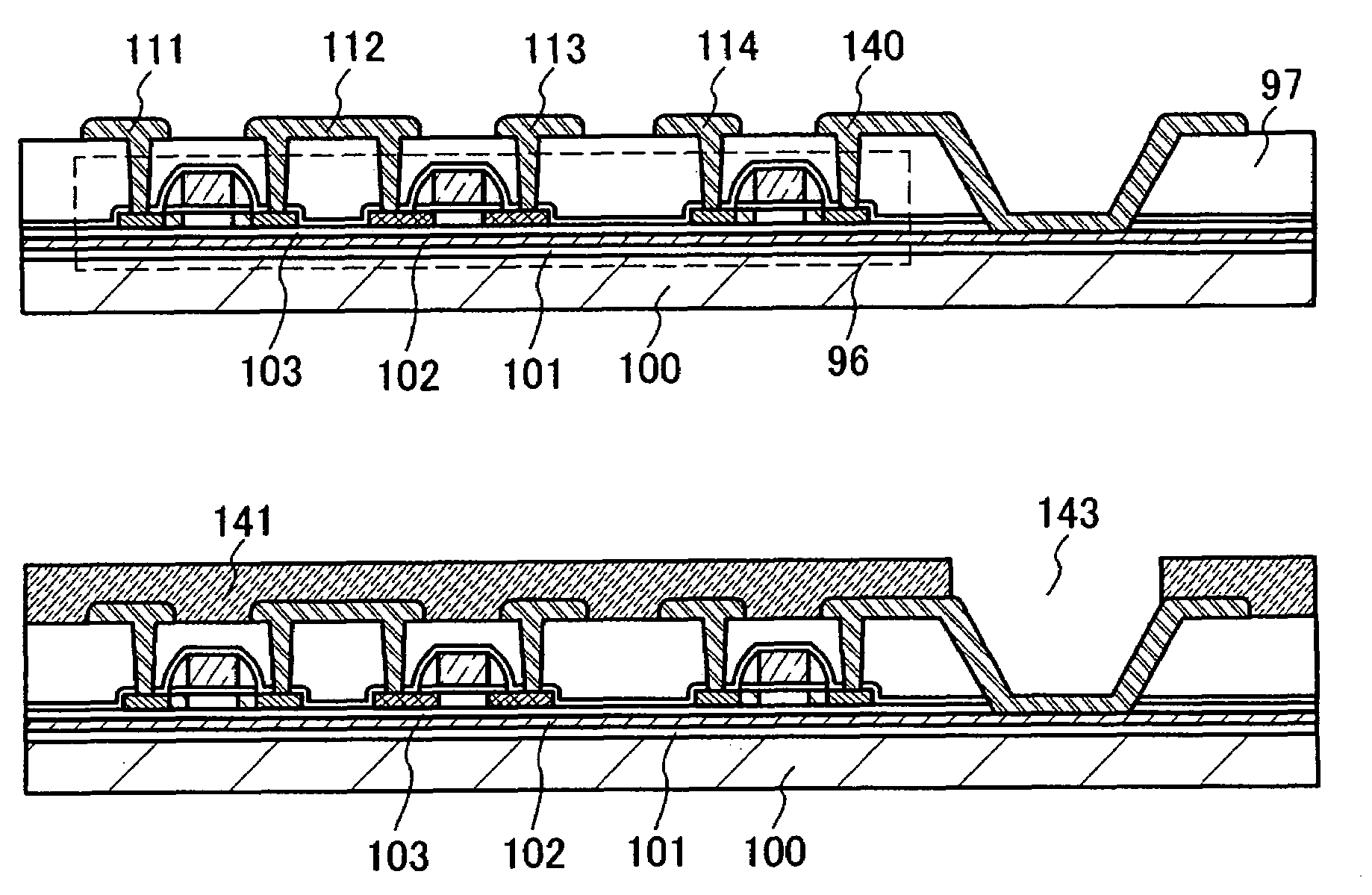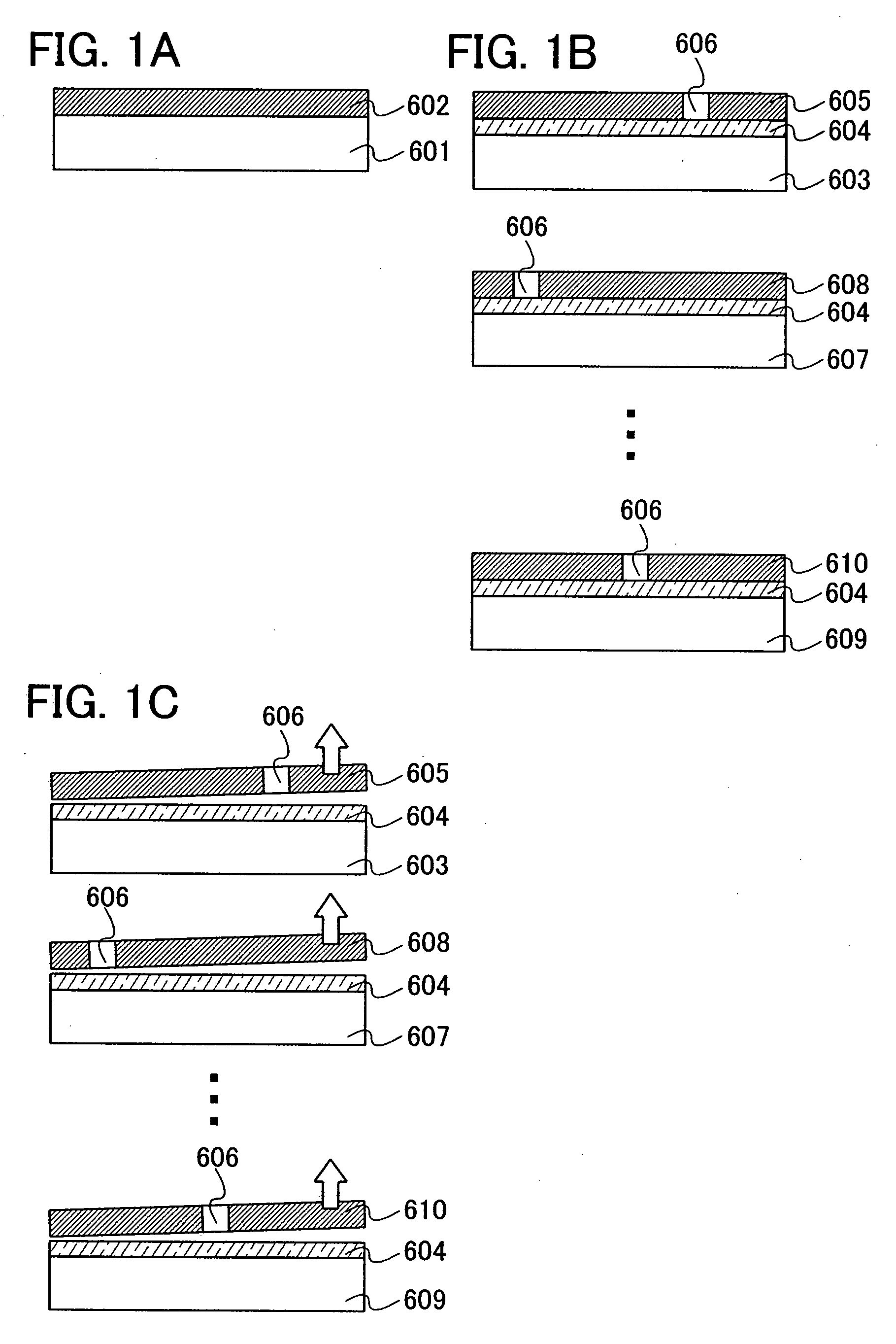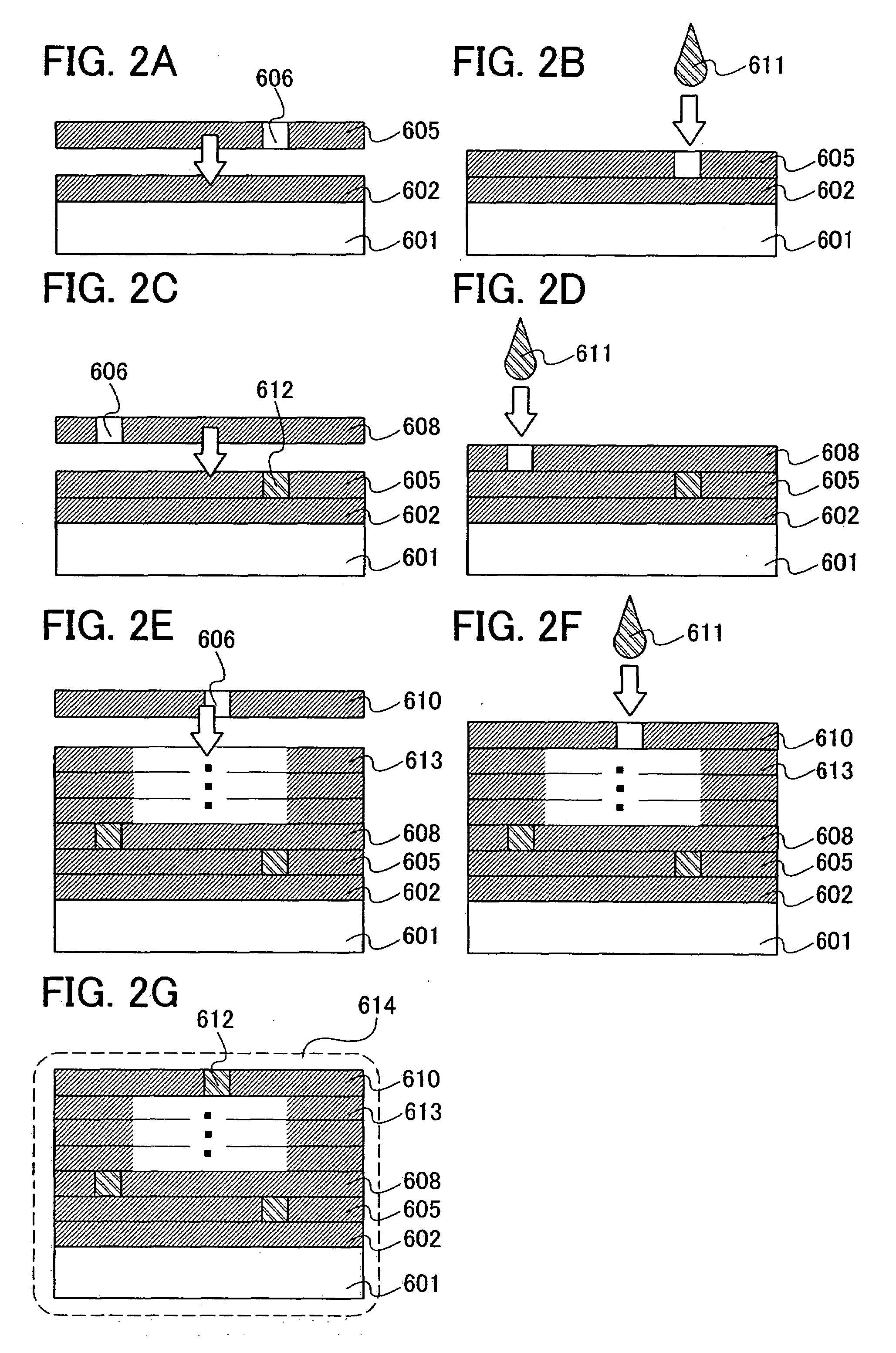Semiconductor integrated circuit, manufacturing method thereof, and semiconductor device using semiconductor integrated circuit
a semiconductor integrated circuit and integrated circuit technology, applied in the direction of semiconductor devices, semiconductor/solid-state device details, electrical apparatus, etc., can solve the problems of long time, reduced productivity, and defect in the integrated circuit, so as to prevent contamination of the semiconductor integrated circuit, suppress the generation of dust, and improve the effect of productivity
- Summary
- Abstract
- Description
- Claims
- Application Information
AI Technical Summary
Benefits of technology
Problems solved by technology
Method used
Image
Examples
embodiment mode 1
[0053]A semiconductor integrated circuit of this embodiment mode is provided with a layer (hereinafter also referred to as an element formation layer) having semiconductor elements, which is formed over each of a plurality of substrates. When the layer having the semiconductor elements is peeled off, and then, overlapped and attached to another substrate, the semiconductor integrated circuit of this embodiment mode is formed. In order to peel off the layer having the semiconductor elements from the substrate, a release layer is formed over the substrate, and the layer having the semiconductor elements is formed over the release layer. In addition, the layer having the semiconductor elements, which is overlapped and attached to each other, is electrically connected to an upper layer or a lower layer with a through wiring.
[0054]This embodiment mode will briefly describe a method for forming a semiconductor integrated circuit of the present invention with reference to FIGS. 1A to 3D.
[0...
embodiment mode 2
[0080]This embodiment mode will describe a method for forming the first to n-th element formation layers which form the semiconductor integrated circuit described in Embodiment Mode 1, and a method for forming a semiconductor integrated circuit by stacking those element formation layers, with reference to FIGS. 4A to 10B. Here, FIGS. 4A to 9B show cross-sectional views of a substrate, and FIGS. 10A and 10B show top views of a substrate.
[0081]First, a method for manufacturing the second to n-th element formation layers in Embodiment Mode 1 will be described. First, a first insulating layer 101 is formed over one surface of a substrate 100. Next, a release layer 102 is formed over the first insulating layer 101. Then, a second insulating layer 103 is formed over the release layer 102 (see FIG. 4A).
[0082]The substrate 100 is a substrate having an insulating surface, for example, a glass substrate, a quartz substrate, a resin (plastic) substrate, a sapphire substrate, a silicon wafer or...
embodiment mode 3
[0138]This embodiment mode will describe a method for forming a semiconductor integrated circuit which has a different structure from Embodiment Mode 2, with reference to drawings. This embodiment mode differs from Embodiment Mode 2, in that, when the first element formation layer to the n-th element formation layer are stacked, a conductive material is sandwiched between the element formation layers.
[0139]FIGS. 11A to 11C show cross-sectional views of the first element formation layer to the n-th element formation layer for forming a semiconductor integrated circuit. Since steps up to and including the formation of the second conductive layers 111 to 116 are the same as the steps up to and including the stage shown in FIG. 4D of Embodiment Mode 2, description thereof is omitted here. A fifth insulating layer 150 is selectively formed so as to cover the fourth insulating layers 97 and the second conductive layers 111 to 116 (see FIG. 11A). The fifth insulating layer 150 is not forme...
PUM
 Login to View More
Login to View More Abstract
Description
Claims
Application Information
 Login to View More
Login to View More - R&D
- Intellectual Property
- Life Sciences
- Materials
- Tech Scout
- Unparalleled Data Quality
- Higher Quality Content
- 60% Fewer Hallucinations
Browse by: Latest US Patents, China's latest patents, Technical Efficacy Thesaurus, Application Domain, Technology Topic, Popular Technical Reports.
© 2025 PatSnap. All rights reserved.Legal|Privacy policy|Modern Slavery Act Transparency Statement|Sitemap|About US| Contact US: help@patsnap.com



